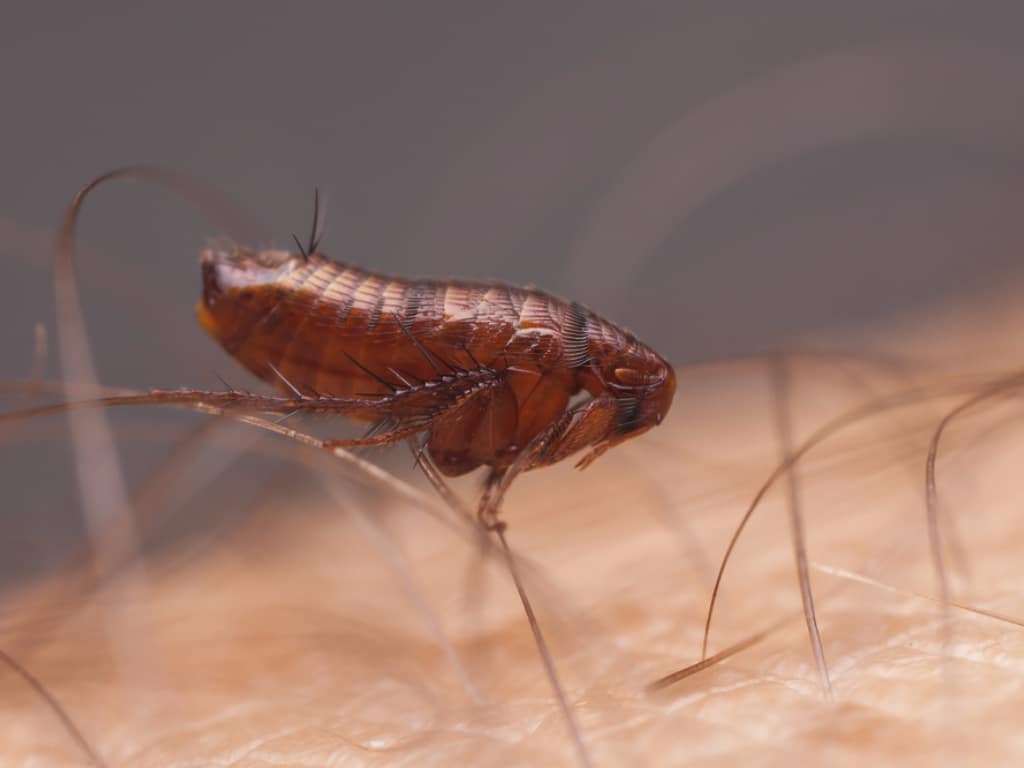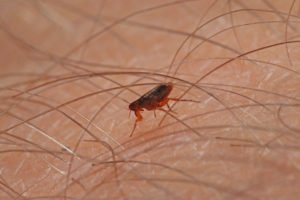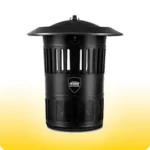Flea Treatment

Just like mosquitoes and sand flies, fleas are highly annoying insects that love to bite and suck your blood. Fleas are generally found on dogs and cats and make their way into our homes by attaching themselves to our pets as hosts.
The thing is, they don’t remain on their “hosts”, only hopping on when they want to feed. What this results in is areas of the home and yard that will end up infested with fleas if adequate flea treatment tactics are not employed.
Let’s take a look at the lifestyle of the flea, how they operate, and ways to both combat a flea problem as well as prevent them from invading your home.
The Life Cycle of a Flea
Most adult fleas are anywhere from 1.5mm to 3.2mm in length. They are so small they can be really difficult to spot. They are wingless and have prenatal and genal combs. They also have mouthparts that pierce the skin and suck blood from their hosts, whether animal or human.
While fleas may not be able to fly, they can certainly jump, even managing heights and distances up to 33cm, which is incredible for such a tiny insect.
An adult female flea can lay between 20 and 50 eggs each day. These eggs fall from pets and land on a variety of surfaces, including bedding or carpet in the environment where the animal lives. These eggs hatch in 2 to 5 days and result in a flea larvae about 4mm long. These larvae have a brown head, but lack eyes and legs.
They will only develop in areas that are protected and have at least 75% relative humidity. They will crawl around for about 15 days feeding on whatever they can find. After this period, they build a small cocoon to go into the pupa stage and develop into adult fleas.
The larvae will develop more rapidly when the temperature is higher. If temperatures are too cool, fleas that are fully developed may remain inside of their cocoon for as long as 12 months hibernating. As the weather warms up and movement occurs over top of the cocoon (vacuuming or walking), the flea can be stimulated to emerge from its cocoon.
The entire life cycle of the flea occurs over a span of 18 days.
Fleas Can Carry Diseases
Fleas can transmit diseases to humans like rickettsiosis and murinelike typhus. The symptoms of murinelike typhus include:
- Chills
- Headaches
- Vomiting
- Rash
- Fever
Fleabites are easily identified as they have a small central bite spot that is surrounded with a red halo without much swelling. These bites can be itchy if a person has sensitive skin. Some pets suffer with hair loss, very itchy skin, and an allergic reaction.
Some adult fleas contain a tapeworm cyst and when pets groom themselves they can ingest those fleas and become infected with tapeworms.
What Are Some Effective Flea Treatments?
It’s important to manage the fleas that infest your pet and possibly your home. Not only are there products on the market for pet flea treatment, there are also some other things you can do to combat the problem.
Fleas need a living host to survive and breed, so one of the first things you need to do is discourage fleas from attaching themself to a host – your pets.
Whether you employ the use of flea collars, flea powder, drops that your place at the nape of your pet’s neck, or even oral medication, until you can stop the fleas from feeding and breeding, you won’t be able to break their lifestyle.
While fleas will bite humans, they don’t breed on humans, so it’s your pets that need effective flea treatment first and foremost.
Next, wash all their bedding in hot water and use your vacuum to carefully clean up the areas where your pet sleeps indoors. Vacuuming is effective for removing larvae and adult fleas from carpets.
Outdoors you can sprinkle a flea powder in the spots where your dog or cat likes to relax. Diatomaceous earth – which is used in many swimming pool filters and sometimes used as a defence against termites – also kills fleas outdoors. Just sprinkle some around like you would with the flea powder. It’s harmless to animals.
There are also indoor and outdoor sprays you can buy to spray your carpets and your yard and lawn to kills off fleas.
Another method of killing off fleas (and many other insects) inside the home is to use a flea bomb. This is a highly invasive method as it fills the home with a mist that’s deadly to fleas. However, it is effective and gets into all the places where fleas might be hiding.
The downside is you’re filling your home with an airborne pesticide and everyone has to remain out of the house for some hours.
These days you can even buy flea traps that are non-toxic and not poisonous; safe for humans and beloved pets. Most work on a battery and you place them in an affected area overnight. These traps lure in the fleas via an intermittent light source and traps them. Place on your carpets and floors.
There are many ways to kill off and eradicate fleas. Definitely treat your pets and find what works best for treating flea problems inside your home and in your yard.
Repeat the Treatments for Fleas
You need to repeat some of these processes again after around 3 to 4 weeks, just to make certain that you’re breaking the lifecycle of the flea.
Keep up the flea treatment on your pets as an ongoing prevention method. If you lapse in this area, your pets will likely pick up fleas from somewhere again and bring them back into your home, reigniting the flea life cycle.
Conclusion
If you have fleas in your home, it’s important to take proactive measures to eliminate these insects quickly and completely. Pestrol has a wide range of effective products that can help you to do just that.
Don’t put up with fleas a moment longer.
We can help: view our flea control products быстрый займ на карту без отказовонлайн займ на яндекс деньгицелевой займ под материнский капитал





 Mosquito Traps
Mosquito Traps